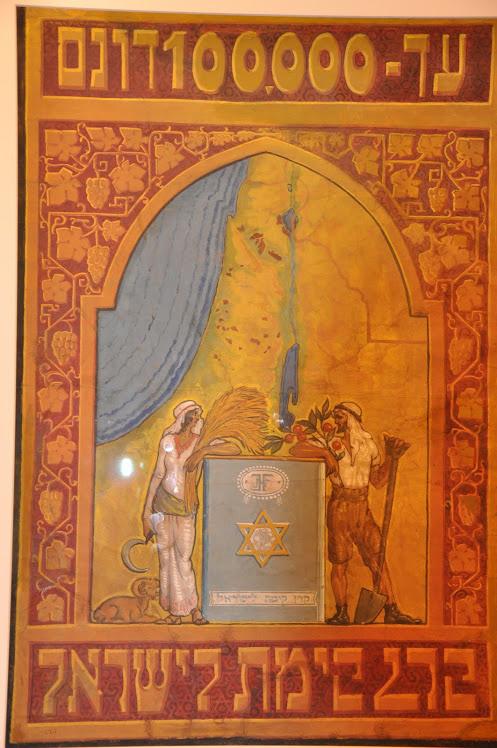A dunam ... was a unit of land area used in the Ottoman Empire and represented the amount of land that could be ploughed in a day. The unit is still in use in many areas previously under Ottoman influence.
The legal definition was "forty standard paces in length and breadth", but its actual area varied considerably from place to place, from 900–2500 m²: in Iraq, about 2500 m²; in Palestine roughly, 1000 m².
In many formerly Ottoman regions, the "new dönüm" or "metric dönüm" has been redefined as exactly one decare (1000 m²).
____________________________________
The blue charity collection boxes have been distributed by the JNF almost from its beginning. Once found in many Jewish homes, the boxes became one of the most familiar symbols of Zionism. A children's song about the boxes, written by Dr. Yehoshua Frizman, Headmaster of the Real Gymnasium for Girls in Kovno, ran:
The box is hanging on the wall
The blue box
Each penny put inside
Redeems the land.
The box was invented when a bank clerk named Haim Kleinman in Nadvorna, Galicia placed a blue box labeled "Keren Le'umit" in his office, and suggested that similar boxes be distributed by the Fund. The first mass-produced boxes were distributed in 1904. Kleinman visited Mandate Palestine in the 1930s and planned to make aliyah, but perished in the Holocaust. Menahem Ussishkin wrote that "The coin the child contributes or collects for the redemption of the land is not important in itself; it is not the child that gives to the Keren Kayemeth, but rather the Fund that gives to the child, a foothold and lofty ideal for all the days of his life."
The boxes could take a variety of shapes and sizes. Some were paper made to fold flat like envelopes and able to contain only a small number of coins, some early American boxes were cylindrical, some German boxes were made of tin stamped into the shape of bound books.
Israel issued postage stamps bearing the image of the blue box in 1983, 1991, and 1993 for the JNF's 90th anniversary.
Source: Wikipedia

